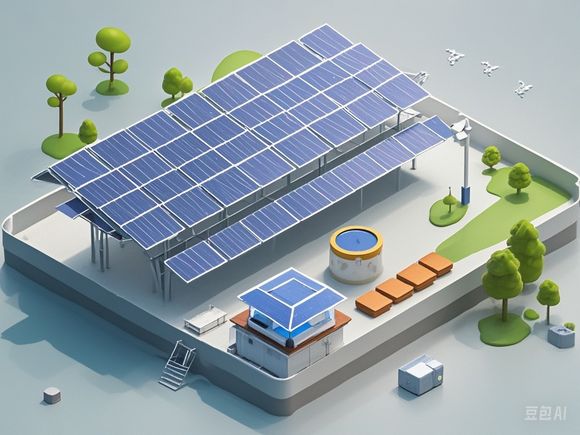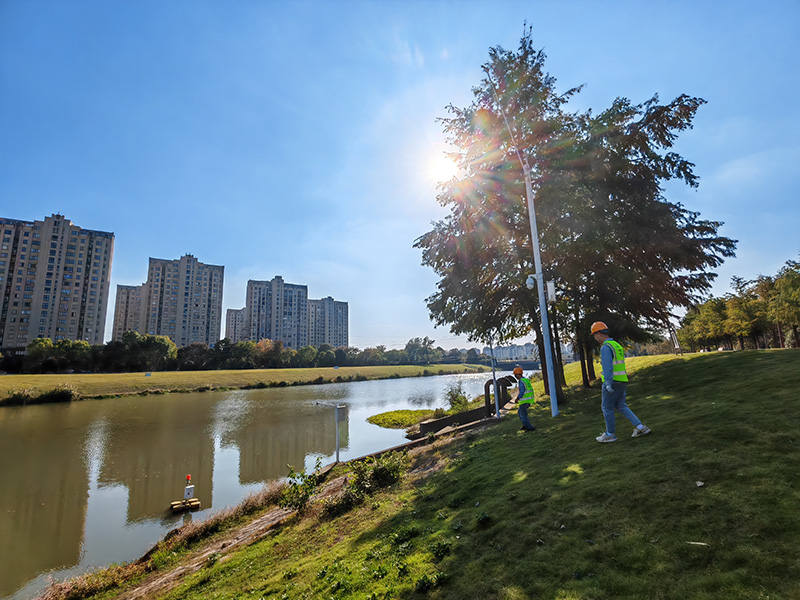Small-Scale Off-Grid Solar Power Systems: A Comprehensive Guide
Hey, I've got some info on small-scale off-grid solar power systems. It's a pretty cool way to generate your own electricity, especially if you live in a remote area or want to reduce your reliance on the grid. Here's the gist:Off-grid solar systems are designed to work independently from the main electricity grid. They typically consist of solar panels, a battery bank to store the energy, an inverter to convert the DC power from the panels into usable AC power, and a charge controller to manage the battery charging.The size of the system depends on your energy needs. You'll want to calculate how much power you use daily and then size the system accordingly. It's important to have enough panels to keep the batteries charged and the inverter running.Batteries are a key component because they store the energy from the sun for use when the sun isn't shining. You'll want to choose batteries that are suitable for solar applications and can handle the depth of discharge you'll be putting on them.The inverter is also crucial because it's what allows you to use the power from the batteries for your regular appliances. Make sure you get an inverter that can handle the wattage of everything you want to run.Installing an off-grid solar system can be a bit technical, so it's often best to hire a professional who can help you design and set it up properly. They can also help you with maintenance and troubleshooting down the line.Overall, small-scale off-grid solar power systems are a great way to become more self-sufficient and reduce your carbon footprint. They're a significant investment, but they can save you money in the long run and provide peace of mind knowing you've got a reliable source of power, even when the grid goes down.
Content:

Hey there! If you're looking to dive into the world of renewable energy and want to learn about small-scale, off-grid solar power systems, you've come to the right place. Let's talk about how you can harness the power of the sun to meet your energy needs, no matter where you are!
First things first, what is an off-grid solar power system? It's a self-sufficient energy system that doesn't rely on the traditional electricity grid. Instead, it generates its own power using solar panels, stores it in batteries, and uses an inverter to convert that power into a usable form for your home or business.
Now, let's break down the components of a small-scale off-grid solar system:
1、Solar Panels: These are the stars of the show. They capture sunlight and convert it into direct current (DC) electricity. The more panels you have, the more power you can generate.
2、Charge Controller: This little device regulates the flow of power from the solar panels to the batteries, ensuring that your batteries are charged efficiently and safely.
3、Deep-Cycle Batteries: These are the power storage units. They store the energy from the solar panels so you can use it when the sun isn't shining.
4、Inverter: If you need to use AC (alternating current) appliances, like your fridge or TV, you'll need an inverter to convert the DC power from the batteries into usable AC power.
5、Breaker Box and AC Outlets: This is where you'll connect your inverter and distribute power to your home.
6、Monitoring System: A good monitoring system will keep an eye on your system's performance, alerting you to any issues and helping you optimize your energy usage.
When setting up your off-grid system, there are a few key factors to consider:
- Your energy needs: Assess how much power you currently use and estimate any future increases.
- The size of your property: You'll need enough space for solar panels to generate the power you need.
- Local weather patterns: Make sure your system can handle the amount of sunlight your location receives.
- Backup systems: Consider a backup generator for cloudy days or during the night.
Installing an off-grid solar system can be a complex process, so it's often best to consult with professionals who can help design a system that's tailored to your specific needs. They can also assist with installation to ensure everything is set up correctly and safely.
Maintenance is key to keeping your off-grid system running smoothly. Regularly check your panels for debris, ensure your batteries are properly charged, and keep an eye on your inverter for any warning signs.
In conclusion, small-scale off-grid solar power systems are a fantastic way to reduce your carbon footprint, gain energy independence, and potentially save money in the long run. Whether you're looking to power a remote cabin, a small business, or your entire home, solar energy is a clean and reliable solution. So go ahead, embrace the sun, and start your journey towards energy self-sufficiency today!

Content expansion reading:
Introduction:
Welcome to the world of small off-grid photovoltaic power systems! In today's world, where energy consumption is increasing at an alarming rate and traditional grid power systems are facing unprecedented challenges due to global warming and climate change, small off-grid photovoltaic power systems have become an indispensable solution for many communities around the globe. These systems harness the power of the sun to generate electricity without relying on the unpredictable and expensive grid power. In this guide, we will delve into the key components that make up a small off-grid photovoltaic power system, from the initial setup to long-term maintenance and optimization. Whether you are a newbie or an experienced solar enthusiast, this comprehensive guide will provide you with all the information you need to successfully implement and maintain a small off-grid photovoltaic power system. So, let's get started!
1、System Components:
The foundation of any small off-grid photovoltaic power system is its componentry. Here are the main components you need to consider:
a) Solar Panels: The heart of your system, solar panels absorb sunlight and convert it into electrical energy. Choose solar panels that are compatible with your local climate and energy needs. Look for high efficiency and low weight options to minimize installation costs.
b) Battery Bank: Batteries store excess energy generated by the solar panels during sunny days and provide backup power during cloudy or rainy periods. Choose batteries with a sufficient capacity and long lifespan to ensure reliable operation.
c) Inverter: An inverter converts direct current (DC) electricity into alternating current (AC) electricity that can be used in homes or other appliances. Look for an inverter that is energy-efficient and quiet, as these factors can significantly impact your system's performance and comfort level.
d) Control Unit: This unit manages the entire system and ensures that all components operate smoothly. It can be a standalone device or integrated with your existing home automation system.
e) Mounting and Accessories: Proper mounting is crucial for the stability and efficiency of your system. Use quality mounting materials like aluminum brackets and rubber feet to prevent vibration and ensure proper alignment. Additionally, consider adding accessories like protective covers or anti-theft locks to further enhance your system's security and convenience.
2、Installation Process:
Once you have identified the necessary components, it's time to start the installation process. Here's what you need to do:
a) Site Preparation: Clear a space on your roof or in your backyard that receives ample sunlight and has minimal obstructions. Check for any local regulations regarding the placement of solar panels and battery bank, especially if they require special clearance or access points.
b) Solar Panel Placement: Determine the optimal orientation for your solar panels based on your local climate and available sunlight. Use a solar tracker to ensure that all areas receive adequate exposure. Ensure that the panel tilt angle is set correctly to maximize solar gain and reduce shading.
c) Battery Bank Installation: Place the battery bank securely on the ground or roof rack, ensuring it is stable and away from moisture and dust. Follow the manufacturer's instructions for battery connection and charging.
d) Inverter Installation: Connect the inverter to the battery bank and the rest of the system components. Test the connections and verify that the inverter is functioning properly before connecting to the grid or using the system independently.
e) Control Unit Installation: Integrate the control unit with your existing home automation system or add it separately. Test the controls to ensure they work seamlessly with your system components.

f) Final Testing: After completing all installation steps, perform a final system test to identify any issues or potential problems. Check for leaks, loose connections, or damaged components. If everything looks good, you're ready to go live!
3、Maintenance and Optimization:
Maintaining your small off-grid photovoltaic power system is essential for its longevity and reliability. Here are some tips for regular maintenance and optimization:
a) Regular Cleaning: Keep your solar panels, batteries, and inverter free from dirt, debris, and pollutants. Clean them regularly using mild soap and water or specialized cleaning solutions recommended by the manufacturer.
b) Monitoring System Performance: Keep track of your system's energy production and consumption patterns. Use monitoring tools or smart apps to analyze data and adjust settings as needed to optimize performance and reduce waste.
c) Battery Replacement: Regularly inspect your batteries for signs of aging or damage. Consider replacing them when they reach their expected lifespan to ensure maximum efficiency and safety.
d) Inverter Maintenance: Regularly inspect the inverter for any cracks or corrosion on the electrical contacts. Clean them with a brush and mild soap or solvent to remove any buildup. Also, check for any warning lights or indicators that may indicate issues.
4、Future Considerations:
As your small off-grid photovoltaic power system matures, there are several additional considerations you can explore. Here are a few suggestions:
a) Energy Storage Options: Consider investing in advanced energy storage solutions like pumped hydro or flywheels to store excess energy generated by solar panels during off-peak hours. These technologies can help smooth out fluctuations in energy production and provide backup power for critical loads.
b) Smart Home Automation: Integration with smart home automation systems allows you to remotely monitor and control your solar system's operations. This can save energy by automatically adjusting settings based on weather conditions or real-time usage patterns.
c) Community Collaboration: Consider partnering with local community organizations or renewable energy providers to share infrastructure costs and promote collective energy generation initiatives. This can create a more sustainable and resilient community energy network.
5、Conclusion:
In conclusion, small off-grid photovoltaic power systems offer a powerful alternative to traditional grid power sources, offering significant cost savings while reducing environmental impact. By understanding the key components, installing the system properly, performing regular maintenance, and considering future optimization strategies, you can successfully integrate this technology into your daily life and support sustainability efforts in your community. Remember, investing in small off-grid photovoltaic power systems is not just about saving money; it's about making a positive contribution to a cleaner and more resilient future for ourselves and generations to come.
Articles related to the knowledge points of this article:
How Much Does a Small-Scale Solar Power System Cost?
Understanding the Cost of Building a Solar Power Plant
Affordable Solar Power Solutions for Your Home or Business
Solar Power for Your Home: A Guide to Small-Scale Solar Electric Systems